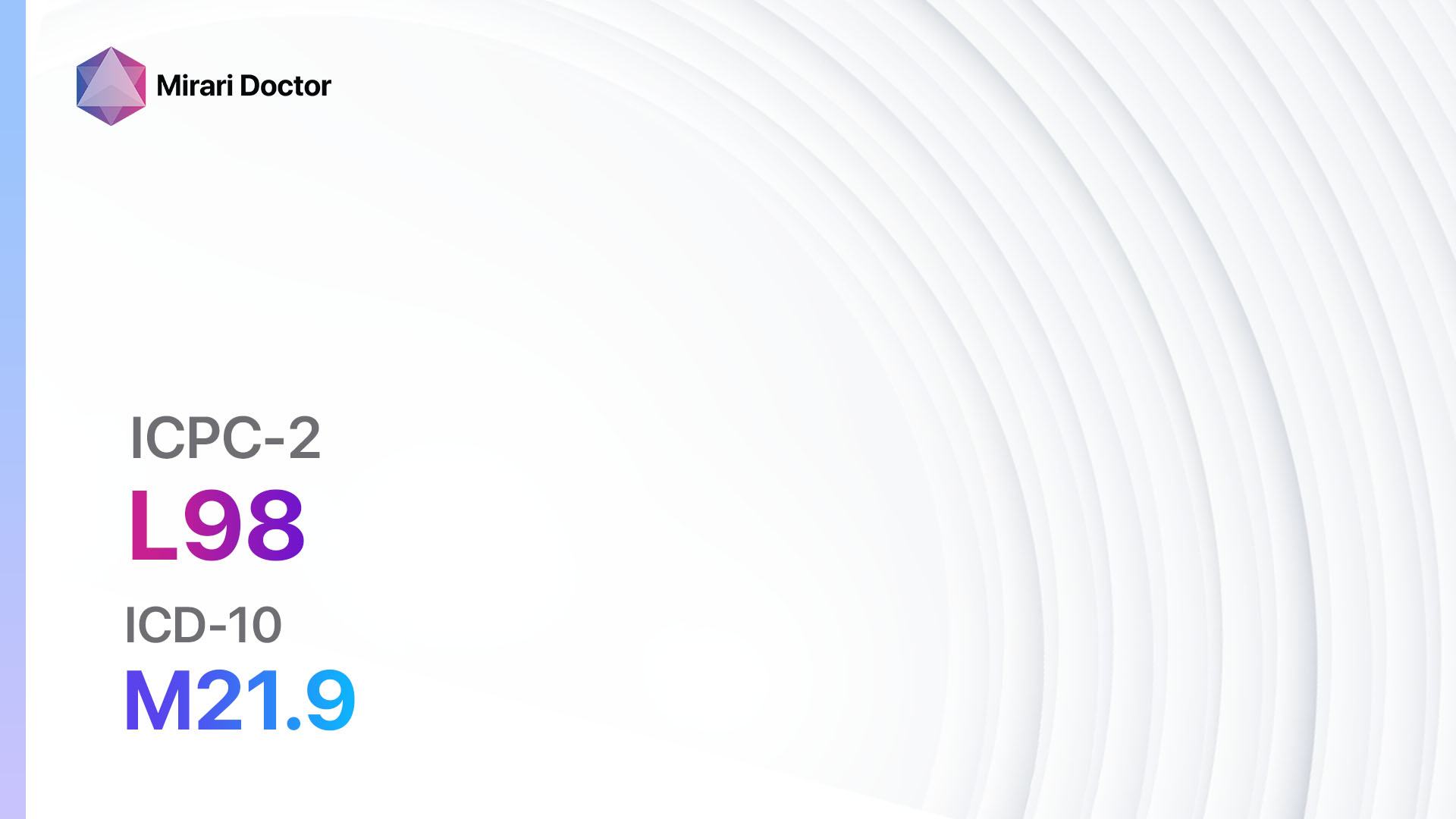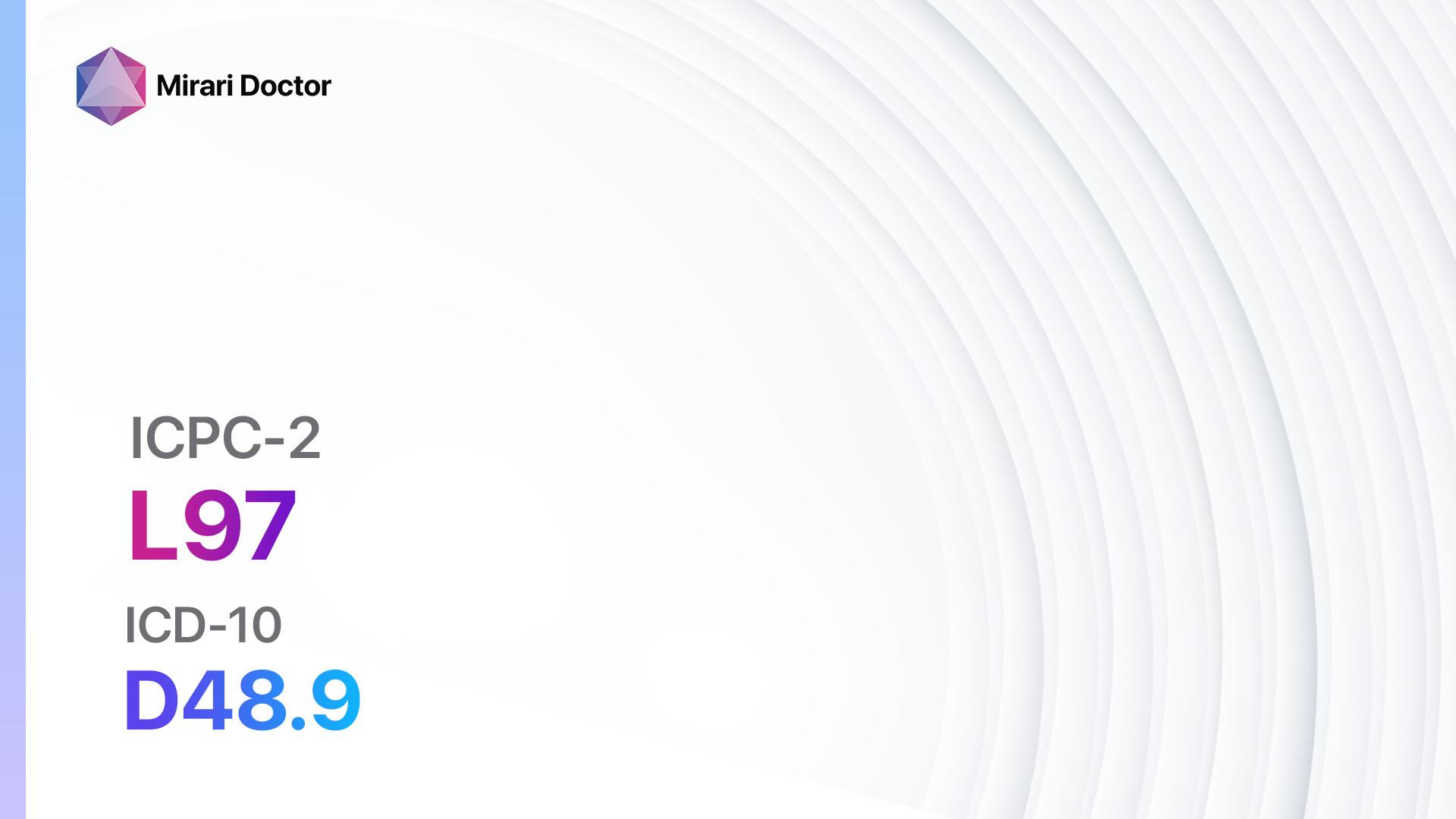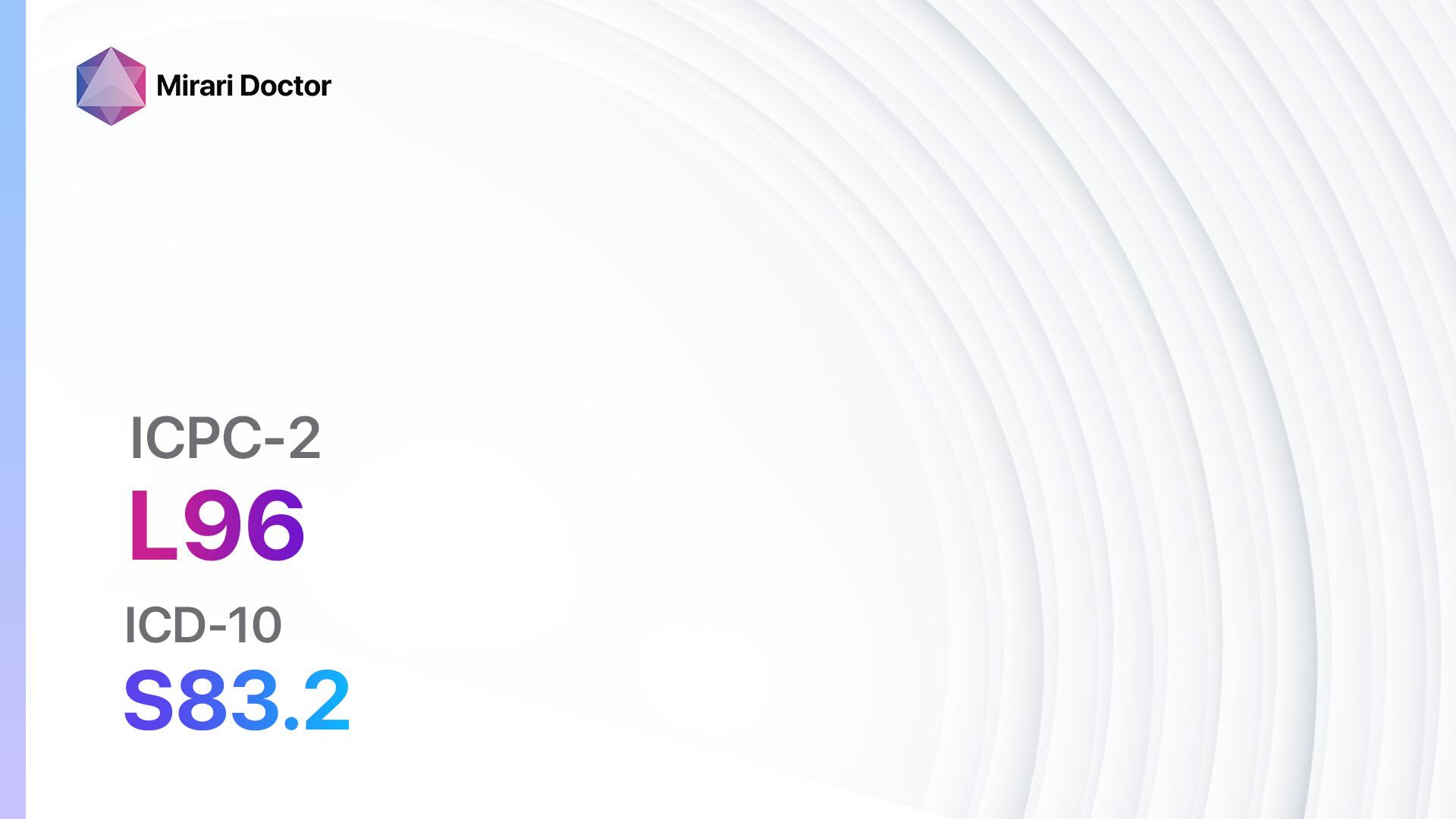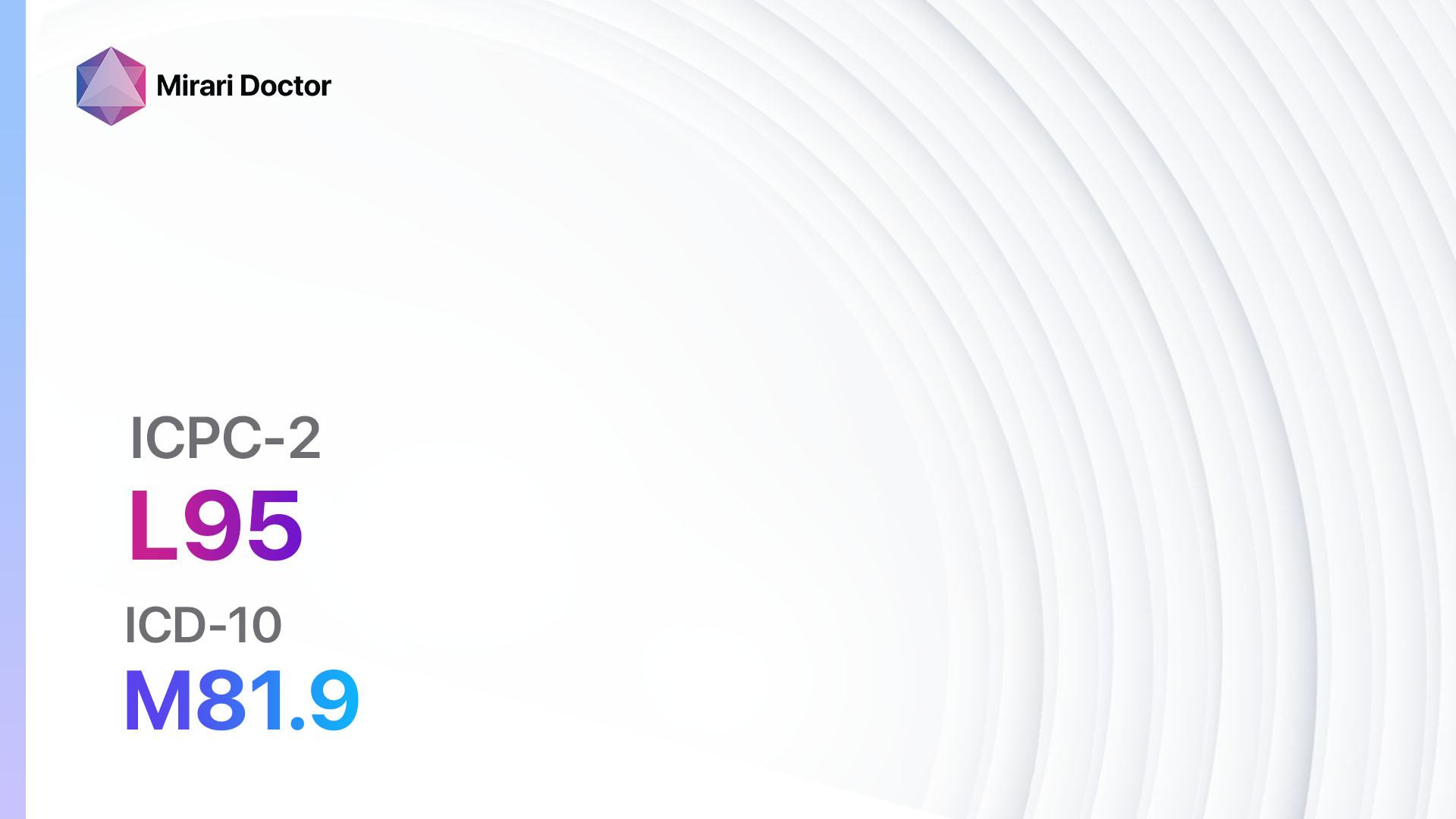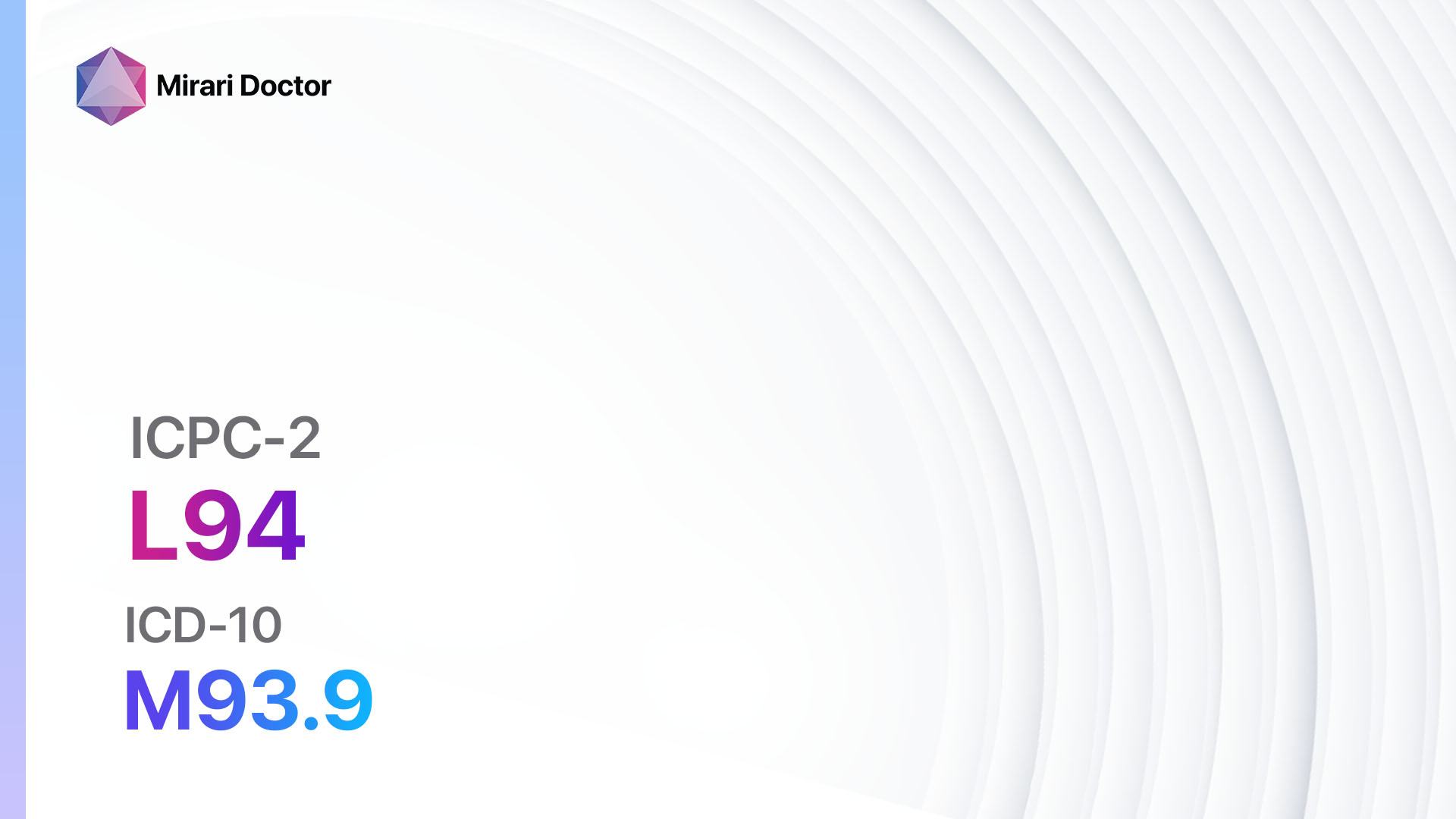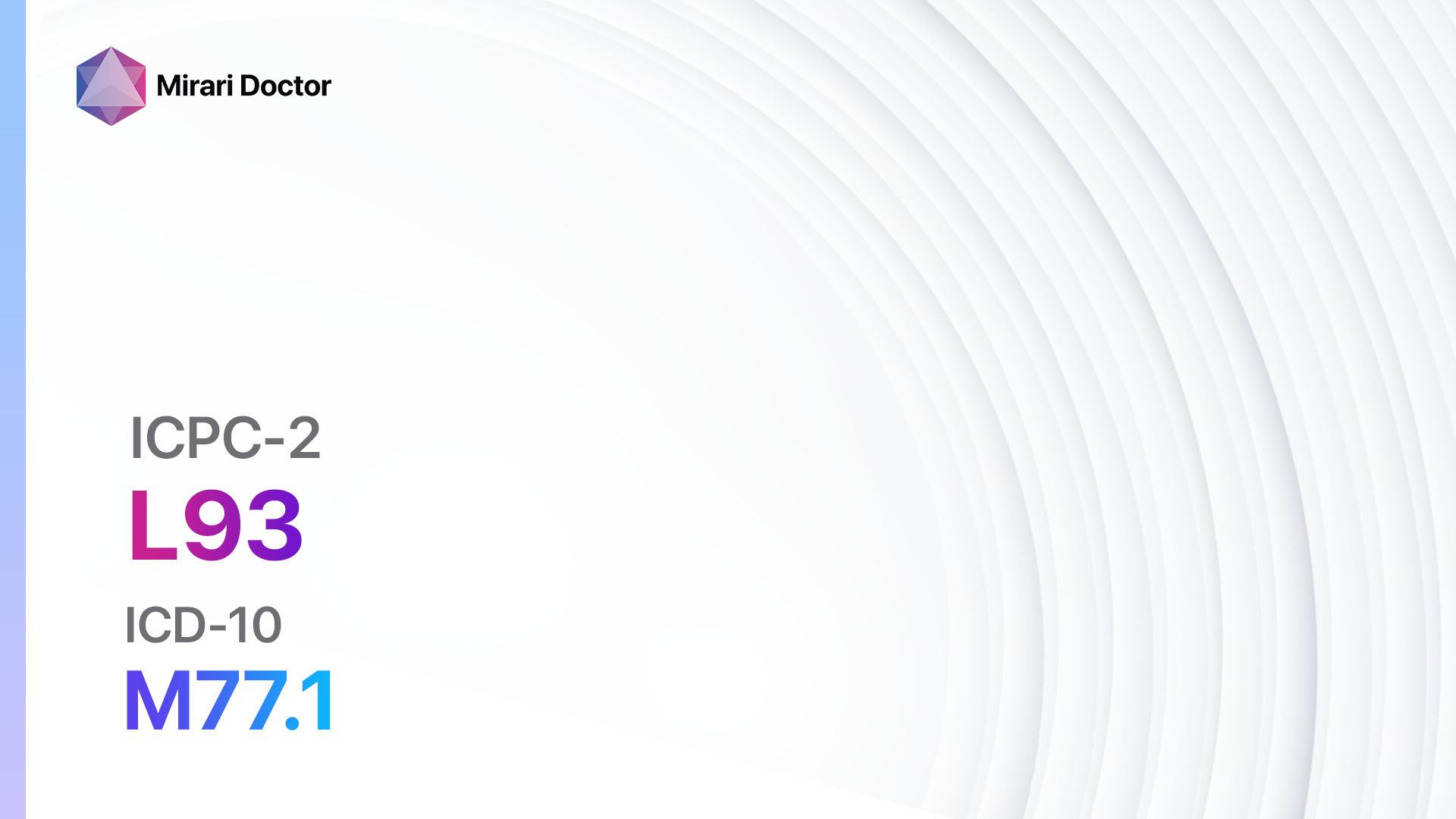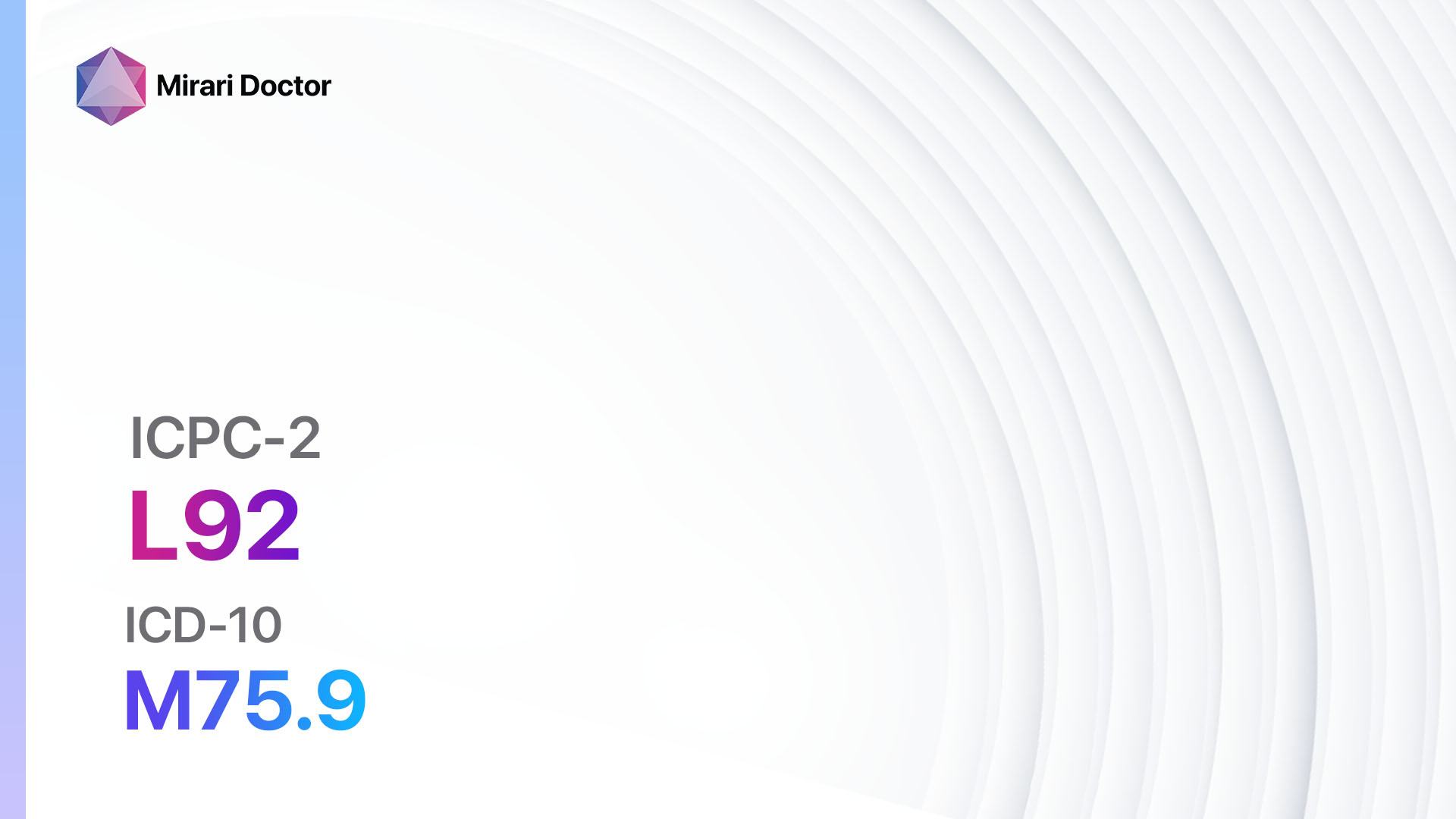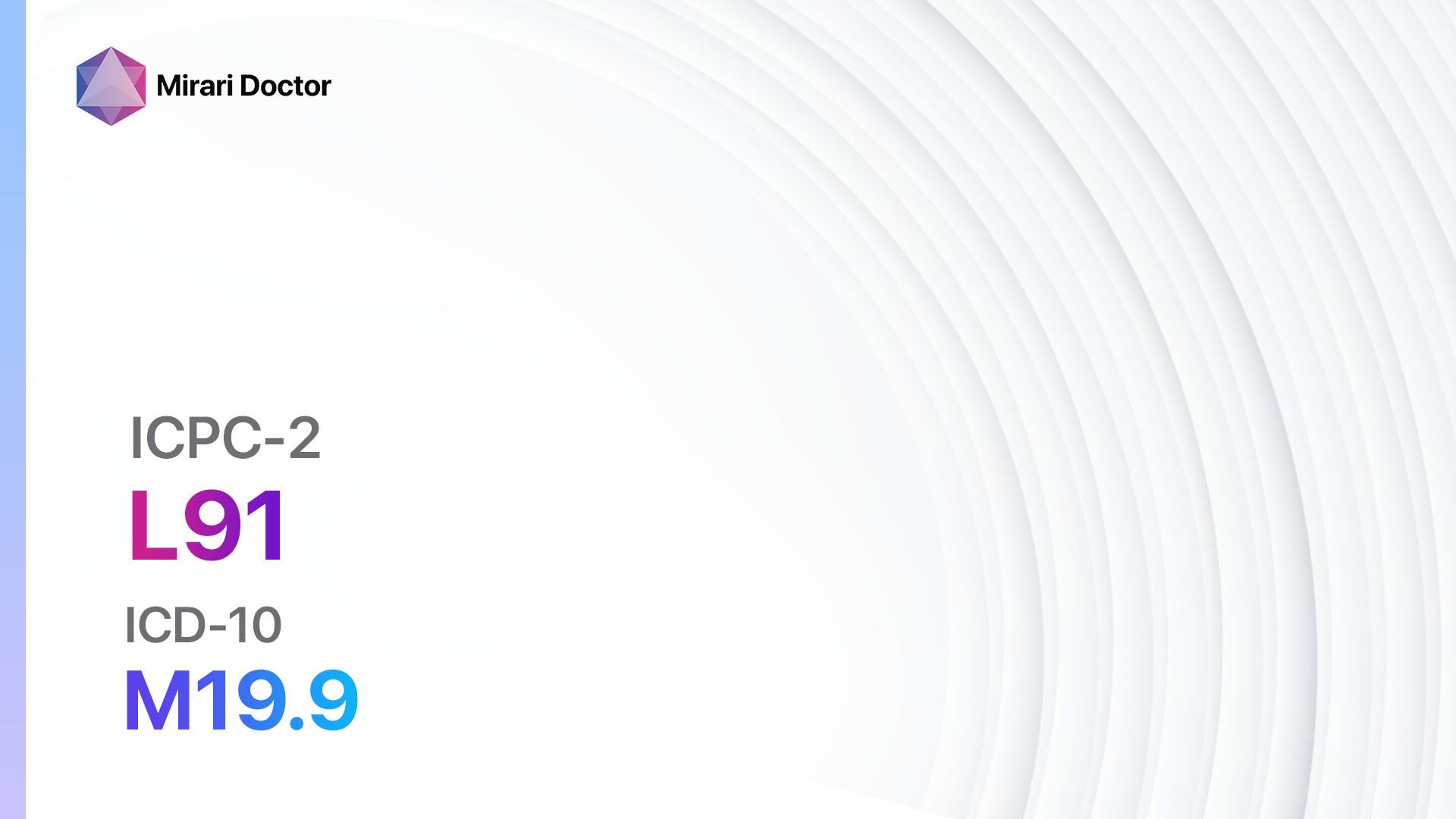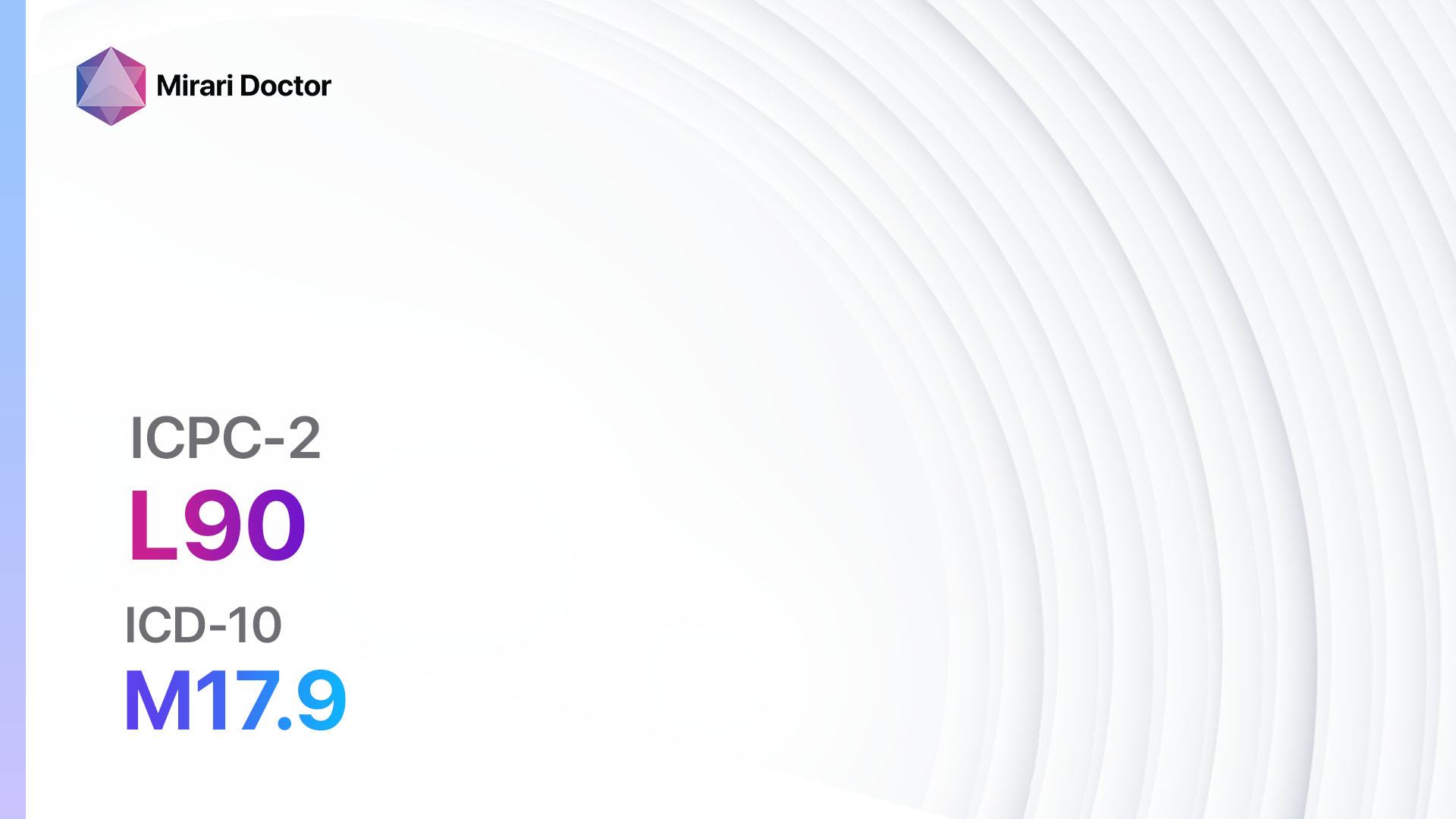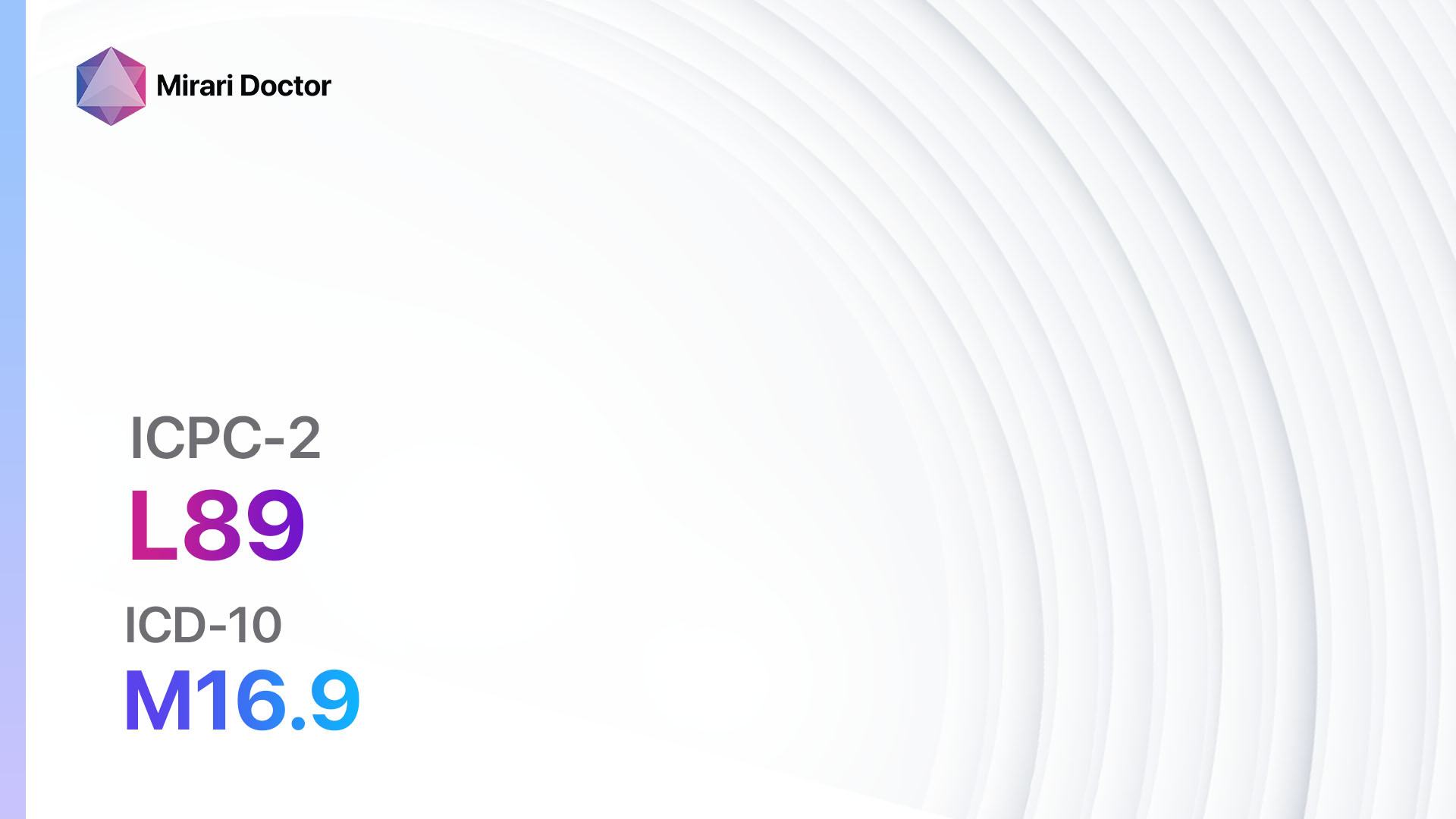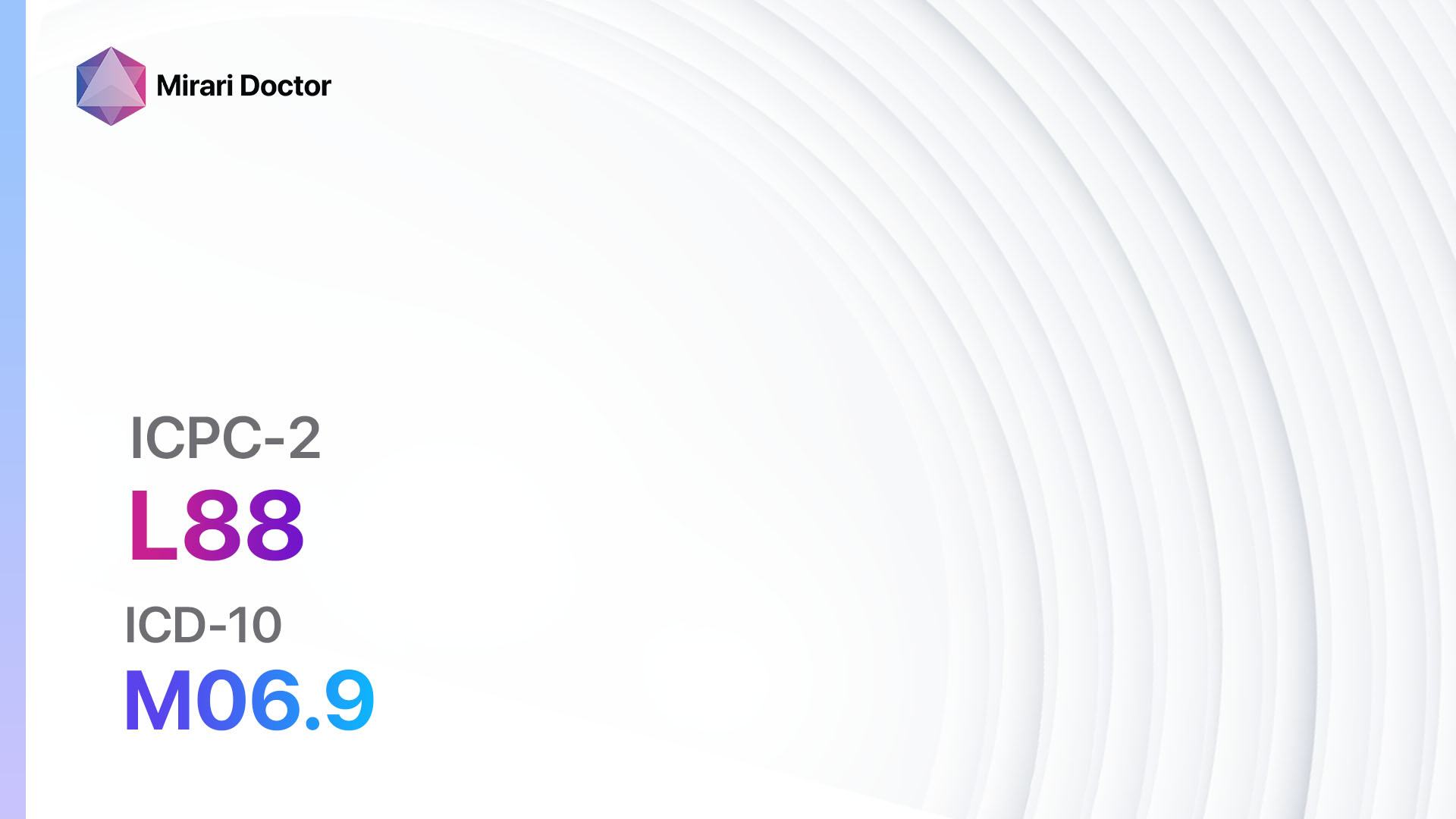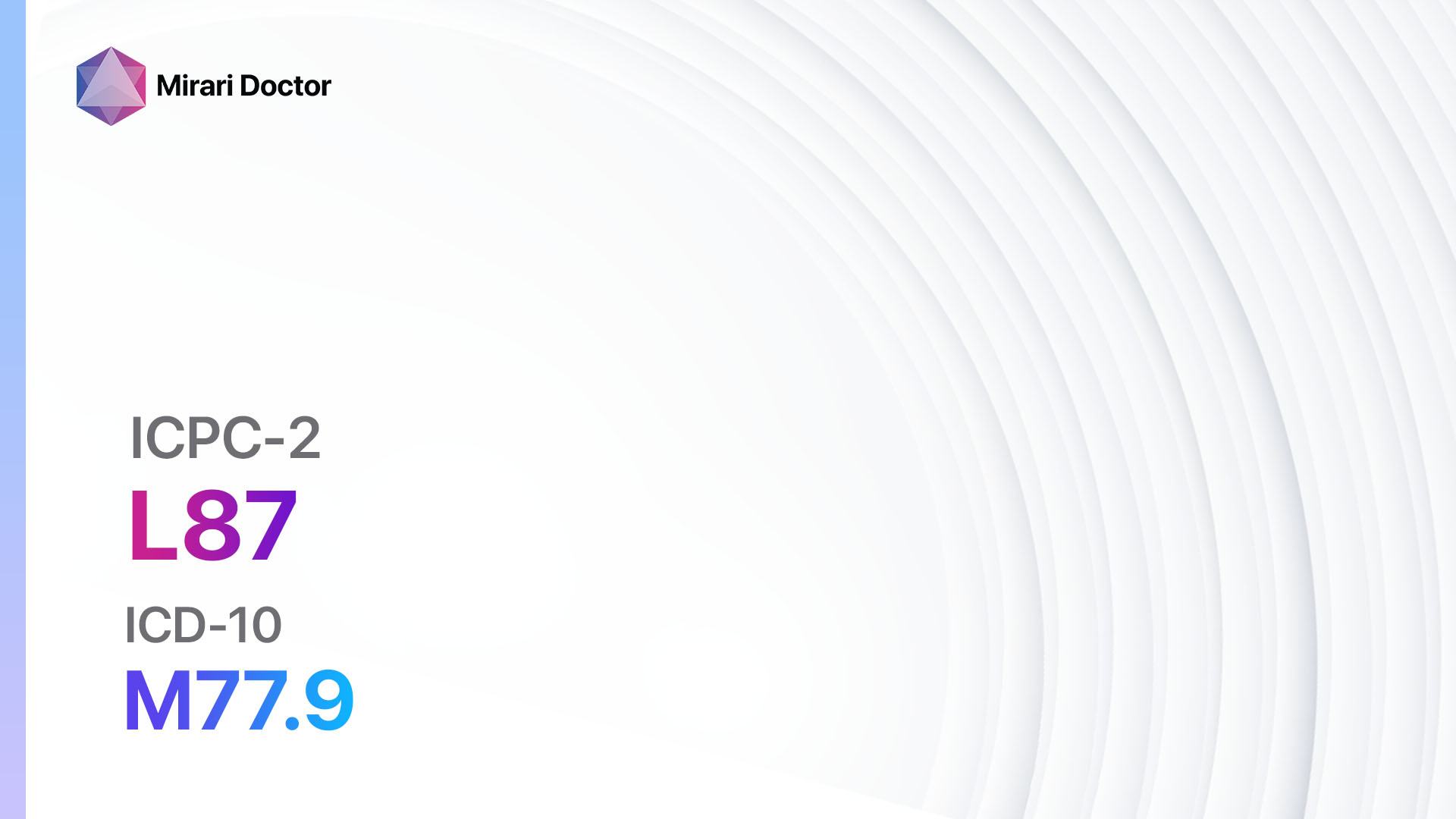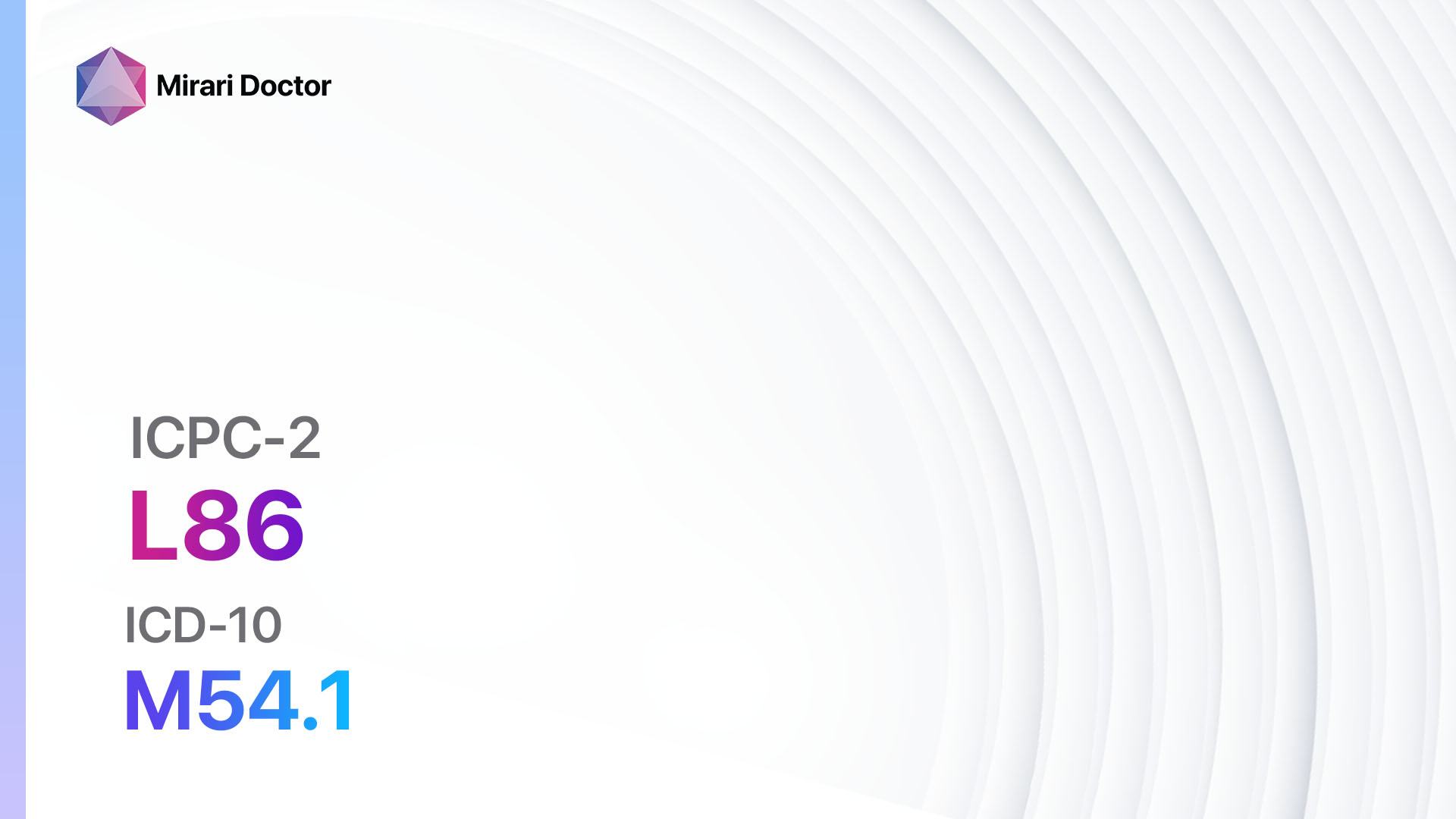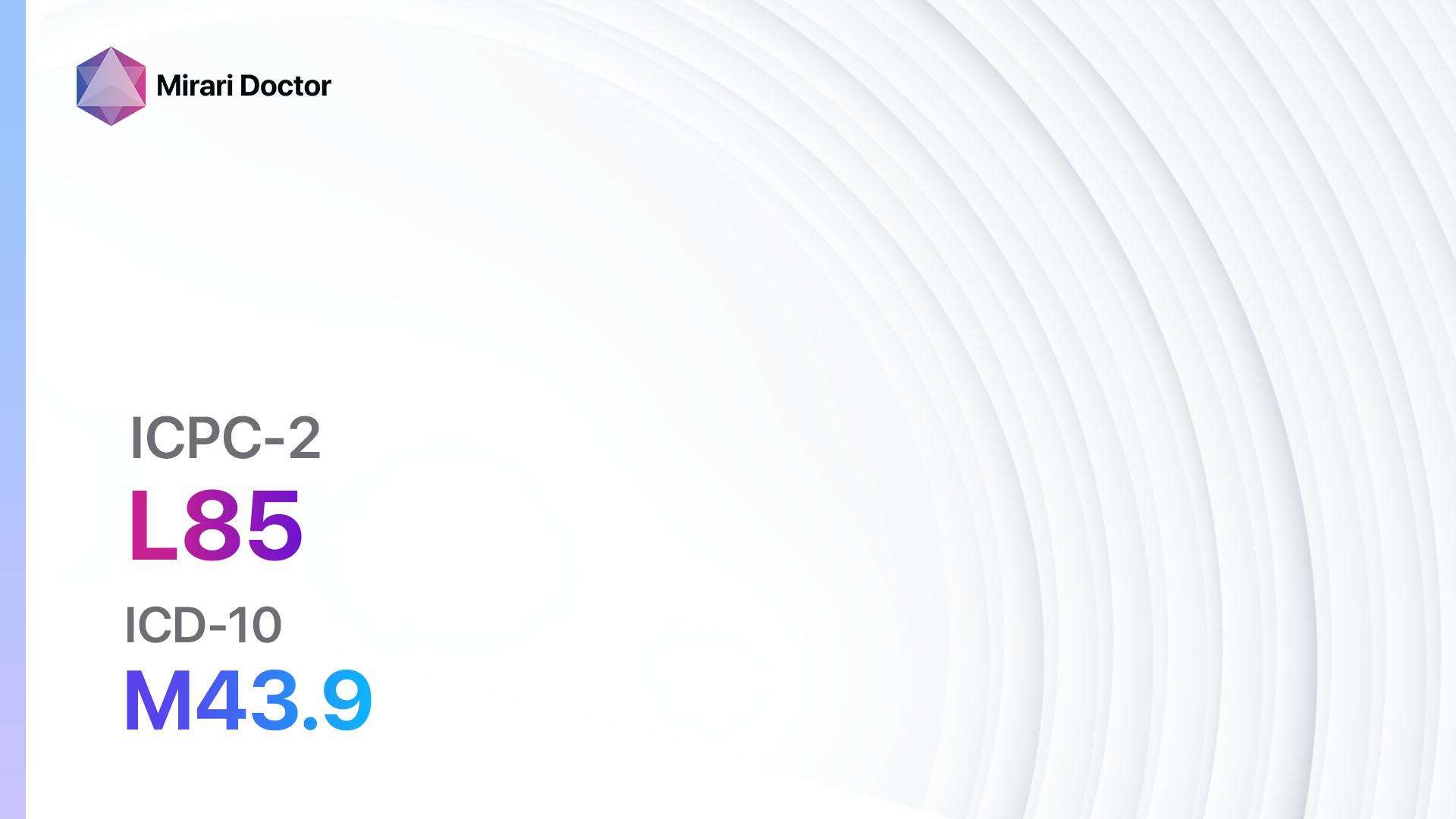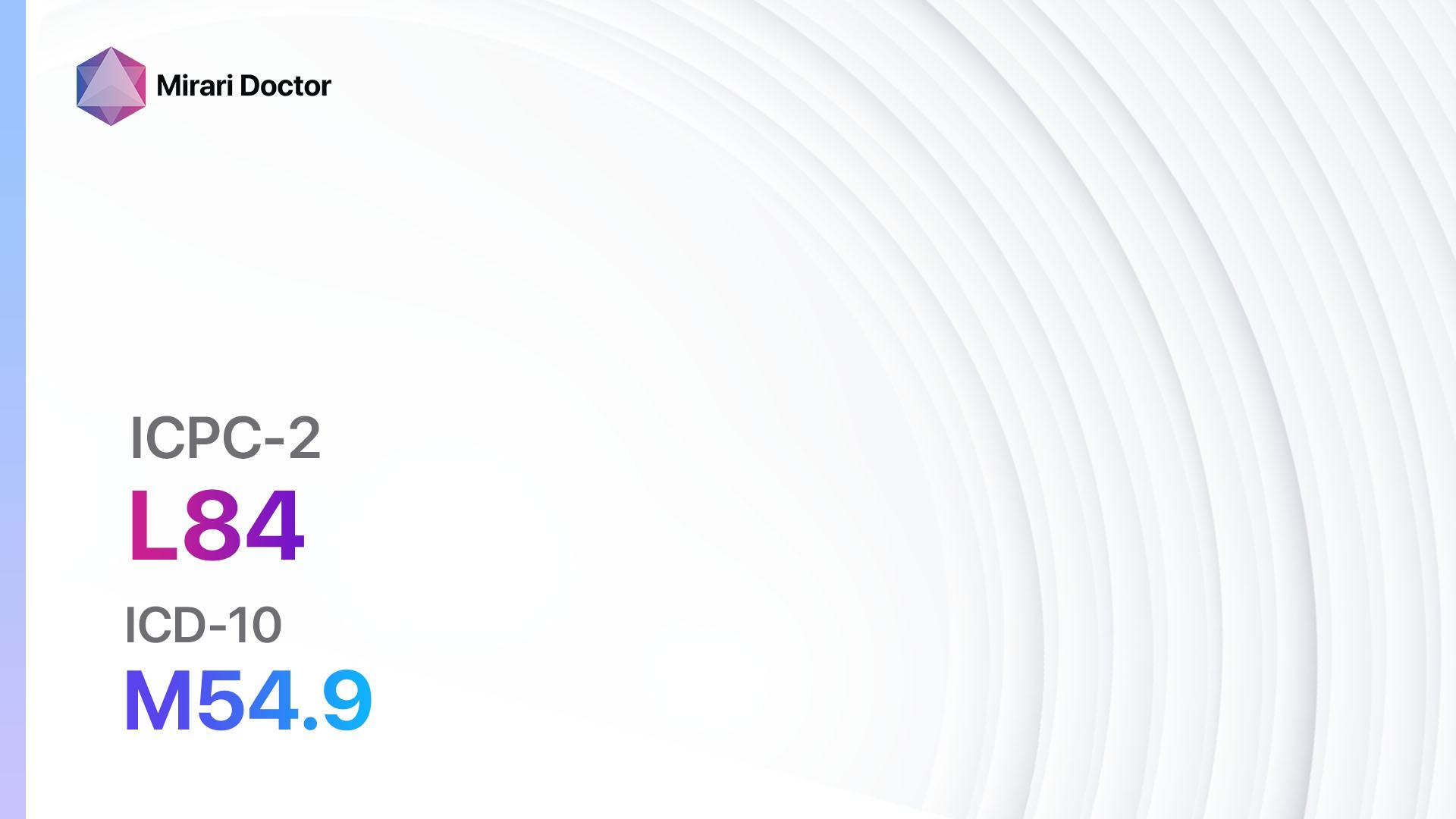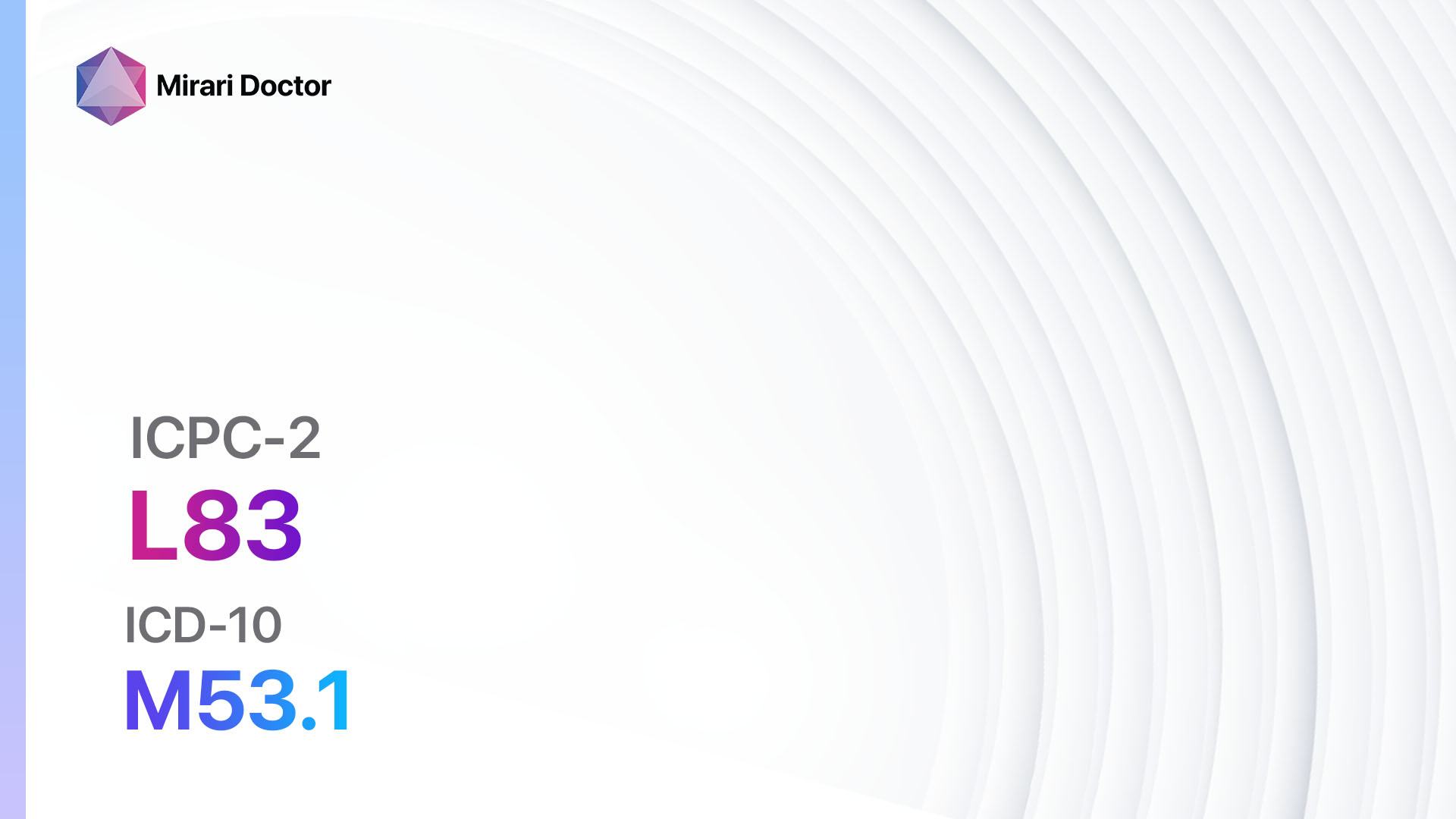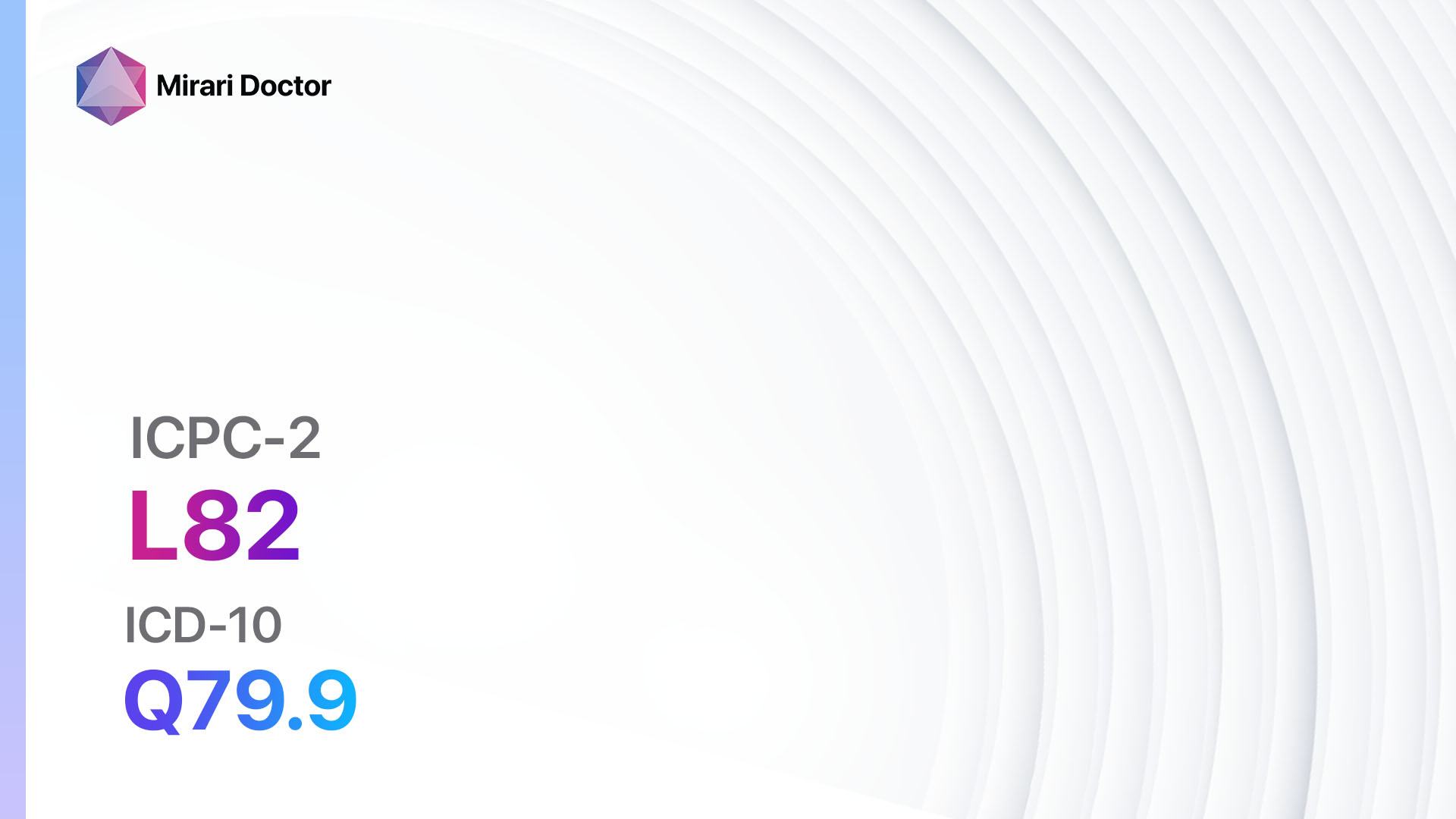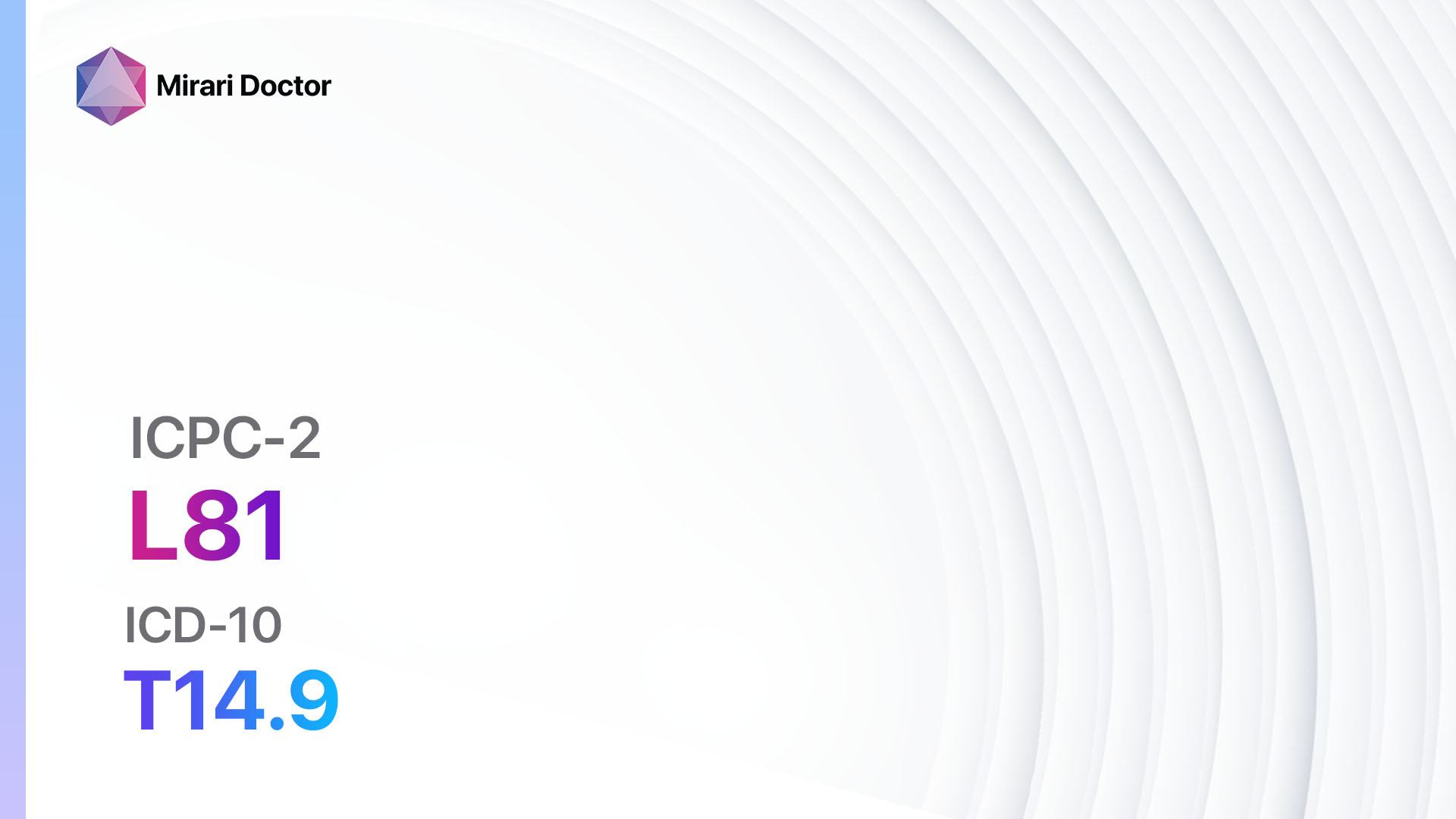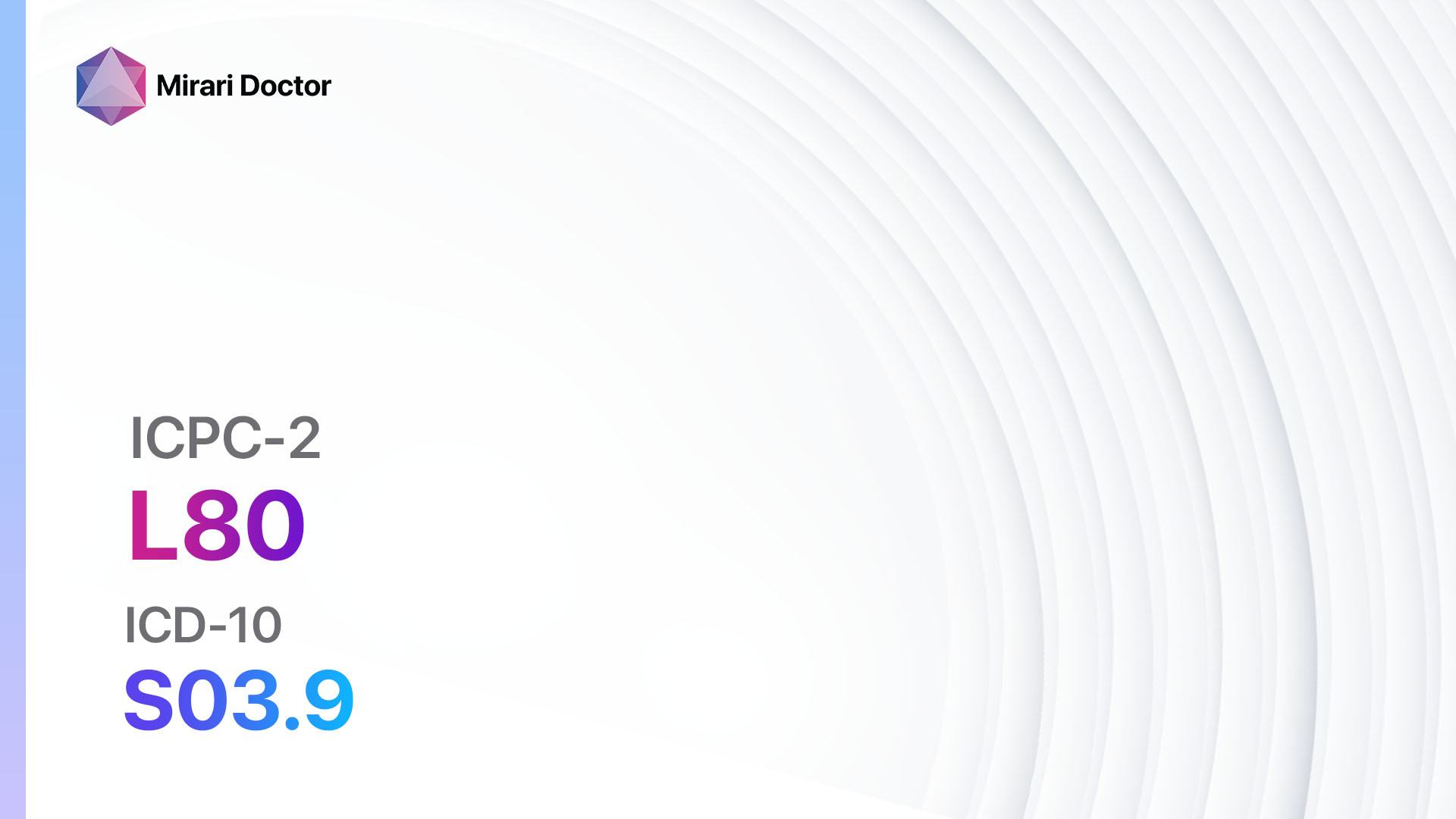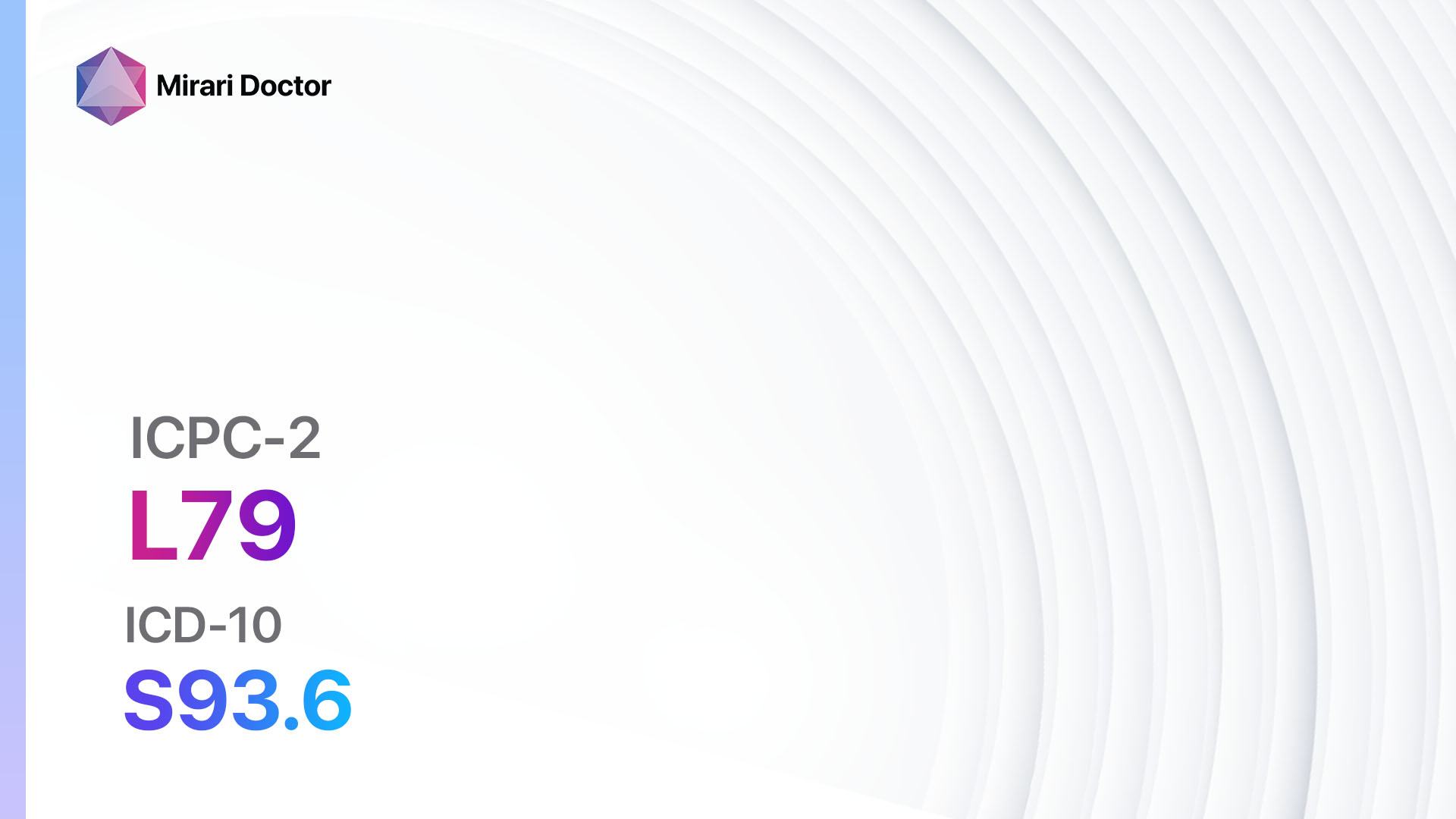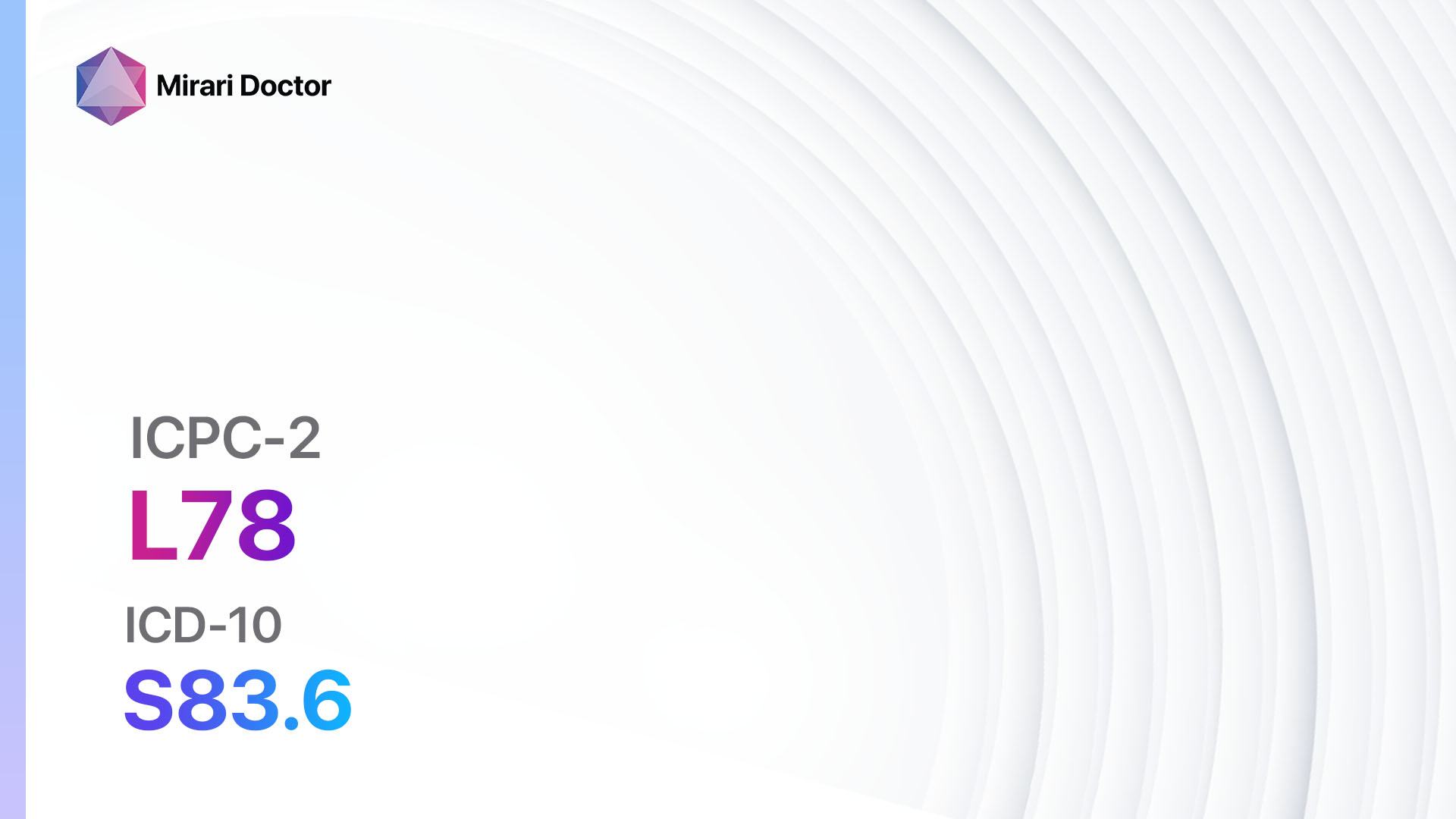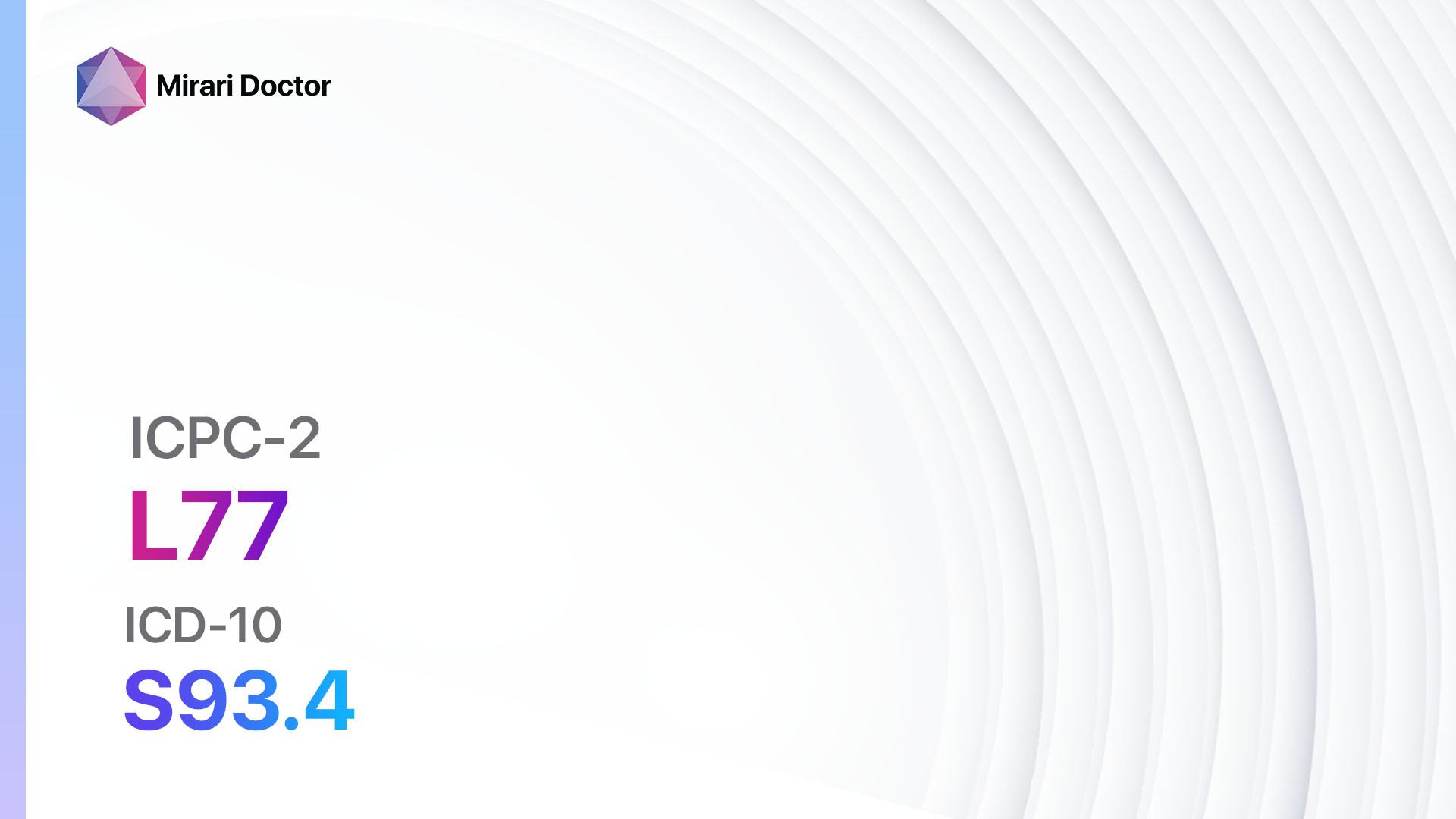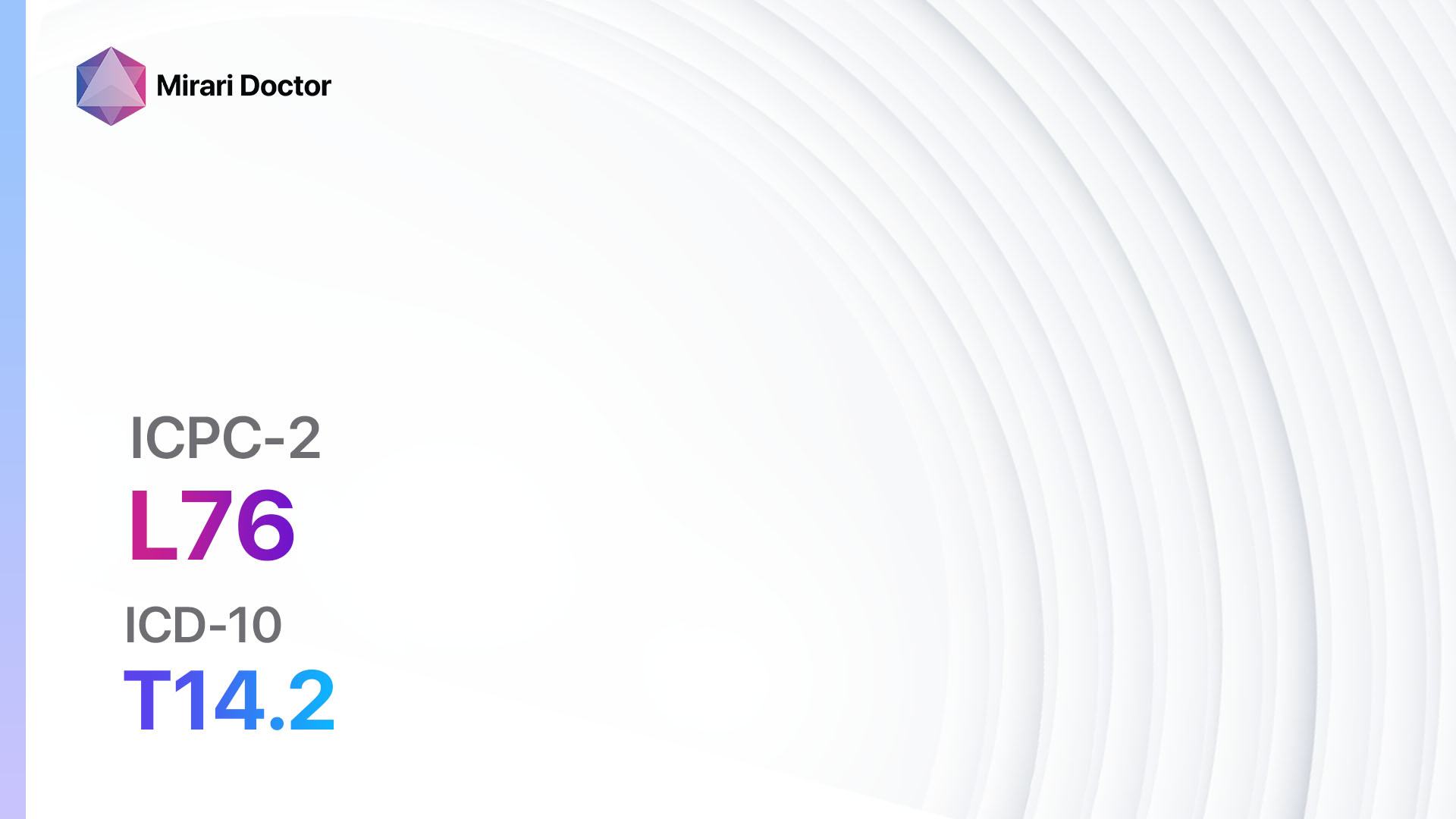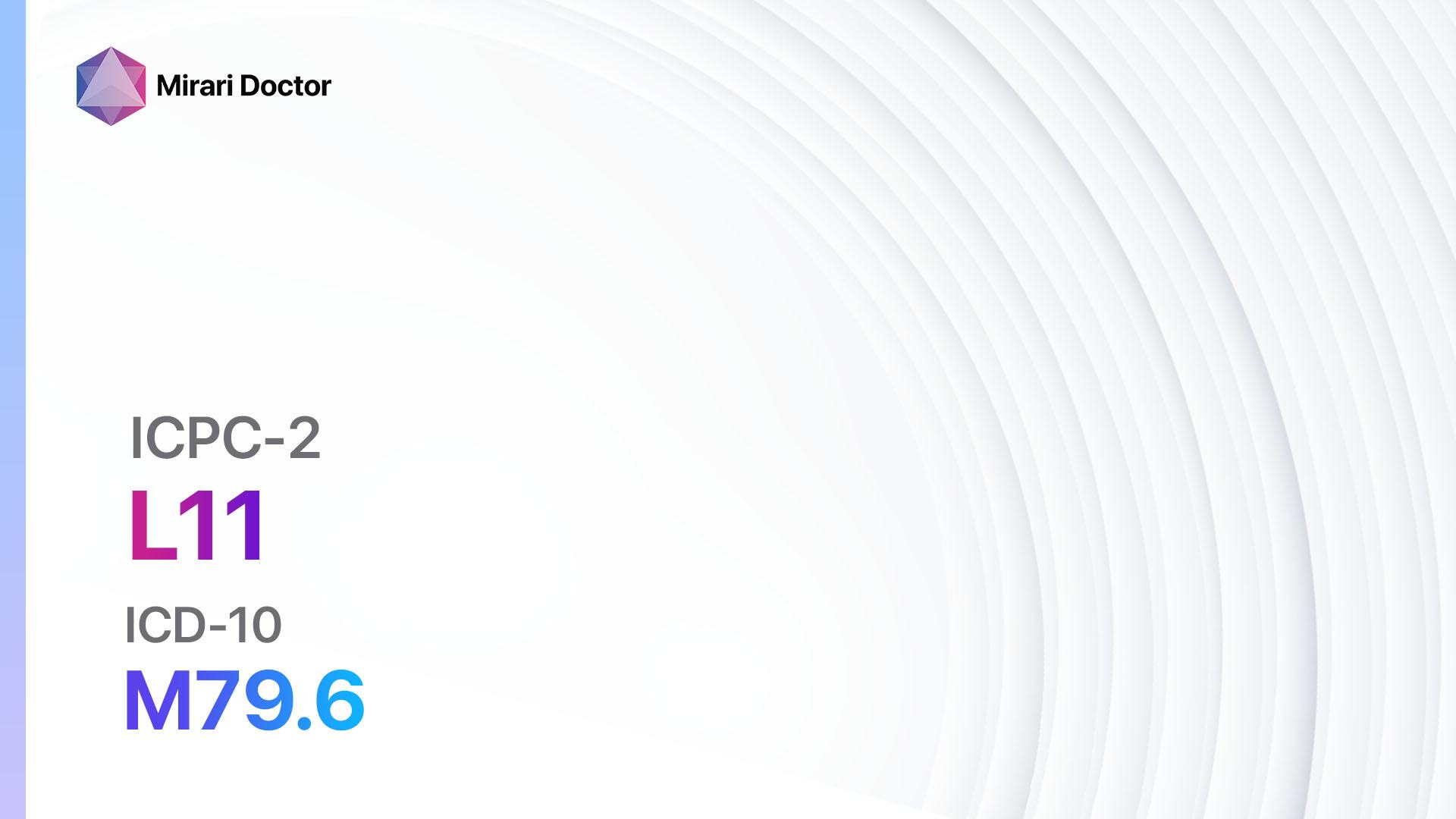
Introduction
Wrist symptoms or complaints can be caused by a variety of conditions, including injuries, overuse, arthritis, and nerve compression[1]. These symptoms can significantly impact daily activities and quality of life[2]. The aim of this guide is to provide healthcare professionals with a comprehensive approach to diagnosing and managing wrist symptoms.
Codes
Symptoms
- Pain: Patients may experience pain in the wrist, which can range from mild to severe. The pain may be localized or radiate to the hand or forearm[5].
- Swelling: Swelling around the wrist joint may be present, indicating inflammation or fluid accumulation[6].
- Stiffness: Patients may have difficulty moving their wrist, especially after periods of rest or in the morning[7].
- Weakness: Weakness in the wrist and hand muscles may be present, affecting grip strength and dexterity[8].
- Numbness or tingling: Patients may experience sensations of numbness or tingling in the wrist, hand, or fingers, indicating nerve involvement[9].
Causes
- Trauma: Wrist symptoms can result from acute injuries, such as fractures, sprains, or strains[10].
- Overuse: Repetitive activities or excessive use of the wrist can lead to inflammation and pain.
- Arthritis: Conditions like osteoarthritis, rheumatoid arthritis, or gout can cause wrist symptoms.
- Nerve compression: Conditions like carpal tunnel syndrome or ulnar nerve entrapment can result in wrist symptoms.
- Infection: In rare cases, wrist symptoms may be caused by an infection in the joint or surrounding tissues.
Diagnostic Steps
Medical History
- Gather information about the onset, duration, and progression of wrist symptoms.
- Identify any previous injuries or trauma to the wrist.
- Ask about any underlying medical conditions, such as arthritis or diabetes.
- Inquire about occupational or recreational activities that may contribute to wrist symptoms.
- Assess for any associated symptoms, such as swelling, weakness, or numbness.
Physical Examination
- Inspect the wrist for any visible deformities, swelling, or discoloration.
- Palpate the wrist joint to assess for tenderness, warmth, or crepitus.
- Evaluate range of motion and assess for any limitations or pain during movement.
- Perform specific tests, such as the Phalen’s test or Tinel’s sign, to assess for nerve compression.
- Test grip strength and assess for any weakness or muscle wasting.
Laboratory Tests
- Complete blood count (CBC): To assess for signs of infection or inflammation.
- Erythrocyte sedimentation rate (ESR) or C-reactive protein (CRP): To measure the level of inflammation in the body.
- Rheumatoid factor (RF) or anti-cyclic citrullinated peptide (anti-CCP) antibodies: To evaluate for autoimmune causes of wrist symptoms.
- Uric acid level: To assess for gout as a potential cause of symptoms.
Diagnostic Imaging
- X-ray: To evaluate for fractures, dislocations, or degenerative changes in the wrist joint.
- Ultrasound: To assess soft tissues, such as tendons or ligaments, for inflammation or tears.
- Magnetic resonance imaging (MRI): To provide detailed images of the wrist joint and surrounding structures, useful for assessing ligament or cartilage injuries.
- Computed tomography (CT) scan: To evaluate bony structures and detect fractures or bone abnormalities.
- Arthrography: A contrast dye is injected into the wrist joint to visualize the joint space and assess for any abnormalities.
Other Tests
- Nerve conduction studies: To evaluate nerve function and assess for nerve compression or damage.
- Arthroscopy: A minimally invasive procedure that allows direct visualization of the wrist joint and can be used for diagnostic purposes or to treat certain conditions.
- Joint aspiration: To obtain a sample of synovial fluid for analysis, helpful in diagnosing infections or inflammatory conditions.
Follow-up and Patient Education
- Schedule follow-up appointments to monitor the progress of treatment and adjust interventions if necessary.
- Provide education on self-care measures, such as rest, ice, compression, and elevation (RICE) for acute injuries.
- Instruct patients on proper ergonomics and techniques to prevent further wrist symptoms.
- Recommend exercises or physical therapy to improve wrist strength and flexibility.
- Discuss the importance of compliance with medications or interventions prescribed.
Possible Interventions
Traditional Interventions
Medications:
Top 5 drugs for wrist symptoms/complaints:
- Nonsteroidal anti-inflammatory drugs (NSAIDs) (e.g., Ibuprofen, Naproxen):
- Cost: Generic versions can be $3-$20/month.
- Contraindications: Active gastrointestinal bleeding, history of peptic ulcers, severe renal impairment.
- Side effects: Upset stomach, heartburn, increased risk of bleeding.
- Severe side effects: Gastrointestinal bleeding, kidney damage, allergic reactions.
- Drug interactions: Anticoagulants, other NSAIDs, corticosteroids.
- Warning: Prolonged use can increase the risk of cardiovascular events.
- Corticosteroids (e.g., Prednisone, Methylprednisolone):
- Cost: Generic versions can be $4-$30/month.
- Contraindications: Active infections, uncontrolled diabetes, systemic fungal infections.
- Side effects: Increased appetite, weight gain, mood changes.
- Severe side effects: Osteoporosis, adrenal suppression, increased risk of infections.
- Drug interactions: Nonsteroidal anti-inflammatory drugs (NSAIDs), anticoagulants.
- Warning: Long-term use can lead to adrenal insufficiency.
- Analgesics (e.g., Acetaminophen, Tramadol):
- Cost: Generic versions can be $3-$20/month.
- Contraindications: Severe liver disease, alcoholism.
- Side effects: Nausea, dizziness, constipation.
- Severe side effects: Liver toxicity, allergic reactions.
- Drug interactions: Warfarin, alcohol.
- Warning: High doses or prolonged use can cause liver damage.
- Muscle relaxants (e.g., Cyclobenzaprine, Methocarbamol):
- Cost: Generic versions can be $4-$30/month.
- Contraindications: Glaucoma, urinary retention, severe liver disease.
- Side effects: Drowsiness, dry mouth, dizziness.
- Severe side effects: Serotonin syndrome, allergic reactions.
- Drug interactions: Sedatives, monoamine oxidase inhibitors (MAOIs).
- Warning: Can cause drowsiness and impair cognitive function.
- Antidepressants (e.g., Amitriptyline, Duloxetine):
- Cost: Generic versions can be $4-$30/month.
- Contraindications: Recent myocardial infarction, narrow-angle glaucoma.
- Side effects: Drowsiness, dry mouth, constipation.
- Severe side effects: Suicidal thoughts, serotonin syndrome.
- Drug interactions: Monoamine oxidase inhibitors (MAOIs), other serotonergic drugs.
- Warning: May take several weeks to achieve therapeutic effect.
Alternative Drugs:
- Topical NSAIDs (e.g., Diclofenac gel): Can provide localized pain relief with fewer systemic side effects. Cost: $10-$50 per tube.
- Capsaicin cream: Derived from chili peppers, it can help relieve pain by desensitizing nerve endings. Cost: $10-$30 per tube.
- Lidocaine patches: Provide localized numbing and pain relief. Cost: $10-$50 per box.
- Anticonvulsants (e.g., Gabapentin, Pregabalin): Can help relieve nerve-related pain. Cost: $10-$50/month.
- Opioids (e.g., Oxycodone, Hydrocodone): Reserved for severe pain that is unresponsive to other treatments. Cost: Varies depending on the specific medication and dosage.
Surgical Procedures:
- Arthroscopy: A minimally invasive procedure that allows visualization and treatment of wrist joint conditions. Cost: $5,000-$10,000.
- Wrist fusion: In cases of severe arthritis or joint instability, the wrist bones may be fused together to provide stability. Cost: $10,000-$20,000.
- Carpal tunnel release: A surgical procedure to relieve pressure on the median nerve in carpal tunnel syndrome. Cost: $5,000-$10,000.
- Tendon repair: In cases of tendon tears or ruptures, surgical repair may be necessary. Cost: $5,000-$10,000.
- Joint replacement: In severe cases of wrist arthritis, joint replacement surgery may be considered. Cost: $15,000-$30,000.
Alternative Interventions
- Acupuncture: May help reduce pain and improve wrist function. Cost: $60-$120 per session.
- Chiropractic care: Manipulative techniques can help improve joint mobility and reduce pain. Cost: $50-$200 per session.
- Physical therapy: Exercises and manual techniques can help improve wrist strength and flexibility. Cost: $50-$150 per session.
- Occupational therapy: Focuses on improving functional abilities and adapting activities to reduce wrist symptoms. Cost: $50-$150 per session.
- Splinting or bracing: Provides support and immobilization to reduce pain and promote healing. Cost: $20-$100 per splint or brace.
Lifestyle Interventions
- Rest and activity modification: Avoiding activities that worsen symptoms and allowing the wrist to rest can promote healing. Cost: None.
- Heat or cold therapy: Applying heat or cold packs to the wrist can help reduce pain and inflammation. Cost: $10-$30 for packs.
- Ergonomic modifications: Adjusting workstations or equipment to reduce strain on the wrist can prevent symptoms. Cost: Varies depending on modifications needed.
- Exercise and stretching: Specific exercises and stretches can help improve wrist strength and flexibility. Cost: None.
- Weight management: Maintaining a healthy weight can reduce stress on the wrist joints. Cost: Varies depending on weight loss methods chosen.
It is important to note that the cost ranges provided are approximate and may vary depending on the location and availability of the interventions.
Mirari Cold Plasma Alternative Intervention
Understanding Mirari Cold Plasma
- Safe and Non-Invasive Treatment: Mirari Cold Plasma is a safe and non-invasive treatment option for various skin conditions. It does not require incisions, minimizing the risk of scarring, bleeding, or tissue damage.
- Efficient Extraction of Foreign Bodies: Mirari Cold Plasma facilitates the removal of foreign bodies from the skin by degrading and dissociating organic matter, allowing easier access and extraction.
- Pain Reduction and Comfort: Mirari Cold Plasma has a local analgesic effect, providing pain relief during the treatment, making it more comfortable for the patient.
- Reduced Risk of Infection: Mirari Cold Plasma has antimicrobial properties, effectively killing bacteria and reducing the risk of infection.
- Accelerated Healing and Minimal Scarring: Mirari Cold Plasma stimulates wound healing and tissue regeneration, reducing healing time and minimizing the formation of scars.
Mirari Cold Plasma Prescription
Video instructions for using Mirari Cold Plasma Device – L11 Wrist symptom/complaint (ICD-10:M79.6)
| Mild | Moderate | Severe |
| Mode setting: 2 (Wound Healing) Location: 0 (Localized) Morning: 15 minutes, Evening: 15 minutes |
Mode setting: 2 (Wound Healing) Location: 0 (Localized) Morning: 30 minutes, Lunch: 30 minutes, Evening: 30 minutes |
Mode setting: 2 (Wound Healing) Location: 0 (Localized) Morning: 30 minutes, Lunch: 30 minutes, Evening: 30 minutes |
| Mode setting: 9 (Arthritis) Location: 0 (Localized) Morning: 15 minutes, Evening: 15 minutes |
Mode setting: 9 (Arthritis) Location: 0 (Localized) Morning: 30 minutes, Lunch: 30 minutes, Evening: 30 minutes |
Mode setting: 9 (Arthritis) Location: 0 (Localized) Morning: 30 minutes, Lunch: 30 minutes, Evening: 30 minutes |
| Mode setting: 7 (Immunotherapy) Location: 1 (Sacrum) Morning: 15 minutes, Evening: 15 minutes |
Mode setting: 7 (Immunotherapy) Location: 1 (Sacrum) Morning: 30 minutes, Lunch: 30 minutes, Evening: 30 minutes |
Mode setting: 7 (Immunotherapy) Location: 1 (Sacrum) Morning: 30 minutes, Lunch: 30 minutes, Evening: 30 minutes |
| Total Morning: 45 minutes approx. $7.50 USD, Evening: 45 minutes approx. $7.50 USD |
Total Morning: 90 minutes approx. $15 USD, Lunch: 90 minutes approx. $15 USD, Evening: 90 minutes approx. $15 USD, |
Total Morning: 90 minutes approx. $15 USD, Lunch: 90 minutes approx. $15 USD, Evening: 90 minutes approx. $15 USD, |
| Usual treatment for 7-60 days approx. $105 USD – $900 USD | Usual treatment for 6-8 weeks approx. $1,890 USD – $2,520 USD |
Usual treatment for 3-6 months approx. $4,050 USD – $8,100 USD
|
 |
|
Use the Mirari Cold Plasma device to treat Wrist symptom/complaint effectively.
WARNING: MIRARI COLD PLASMA IS DESIGNED FOR THE HUMAN BODY WITHOUT ANY ARTIFICIAL OR THIRD PARTY PRODUCTS. USE OF OTHER PRODUCTS IN COMBINATION WITH MIRARI COLD PLASMA MAY CAUSE UNPREDICTABLE EFFECTS, HARM OR INJURY. PLEASE CONSULT A MEDICAL PROFESSIONAL BEFORE COMBINING ANY OTHER PRODUCTS WITH USE OF MIRARI.
Step 1: Cleanse the Skin
- Start by cleaning the affected area of the skin with a gentle cleanser or mild soap and water. Gently pat the area dry with a clean towel.
Step 2: Prepare the Mirari Cold Plasma device
- Ensure that the Mirari Cold Plasma device is fully charged or has fresh batteries as per the manufacturer’s instructions. Make sure the device is clean and in good working condition.
- Switch on the Mirari device using the power button or by following the specific instructions provided with the device.
- Some Mirari devices may have adjustable settings for intensity or treatment duration. Follow the manufacturer’s instructions to select the appropriate settings based on your needs and the recommended guidelines.
Step 3: Apply the Device
- Place the Mirari device in direct contact with the affected area of the skin. Gently glide or hold the device over the skin surface, ensuring even coverage of the area experiencing.
- Slowly move the Mirari device in a circular motion or follow a specific pattern as indicated in the user manual. This helps ensure thorough treatment coverage.
Step 4: Monitor and Assess:
- Keep track of your progress and evaluate the effectiveness of the Mirari device in managing your Wrist symptom/complaint. If you have any concerns or notice any adverse reactions, consult with your health care professional.
Note
This guide is for informational purposes only and should not replace the advice of a medical professional. Always consult with your healthcare provider or a qualified medical professional for personal advice, diagnosis, or treatment. Do not solely rely on the information presented here for decisions about your health. Use of this information is at your own risk. The authors of this guide, nor any associated entities or platforms, are not responsible for any potential adverse effects or outcomes based on the content.
Mirari Cold Plasma System Disclaimer
- Purpose: The Mirari Cold Plasma System is a Class 2 medical device designed for use by trained healthcare professionals. It is registered for use in Thailand and Vietnam. It is not intended for use outside of these locations.
- Informational Use: The content and information provided with the device are for educational and informational purposes only. They are not a substitute for professional medical advice or care.
- Variable Outcomes: While the device is approved for specific uses, individual outcomes can differ. We do not assert or guarantee specific medical outcomes.
- Consultation: Prior to utilizing the device or making decisions based on its content, it is essential to consult with a Certified Mirari Tele-Therapist and your medical healthcare provider regarding specific protocols.
- Liability: By using this device, users are acknowledging and accepting all potential risks. Neither the manufacturer nor the distributor will be held accountable for any adverse reactions, injuries, or damages stemming from its use.
- Geographical Availability: This device has received approval for designated purposes by the Thai and Vietnam FDA. As of now, outside of Thailand and Vietnam, the Mirari Cold Plasma System is not available for purchase or use.
References
- Shehab R, Mirabelli MH. Evaluation and diagnosis of wrist pain: a case-based approach. Am Fam Physician. 2013;87(8):568-573.
- Sammer DM, Chung KC. Evaluation of the wrist: history, physical examination, and imaging. Hand Clin. 2010;26(2):127-134.
- ICPC-2: International Classification of Primary Care, Second edition. Oxford: Oxford University Press; 1998.
- ICD-10: International Statistical Classification of Diseases and Related Health Problems 10th Revision. Geneva: World Health Organization; 2016.
- Forman TA, Forman SK, Rose NE. A clinical approach to diagnosing wrist pain. Am Fam Physician. 2005;72(9):1753-1758.
- Shin AY, Deitch MA, Sachar K, Boyer MI. Ulnar-sided wrist pain: diagnosis and treatment. J Bone Joint Surg Am. 2004;86(7):1560-1574.
- Rettig AC. Wrist and hand overuse syndromes. Clin Sports Med. 2001;20(3):591-611.
- Fowler JR, Gaughan JP, Ilyas AM. The sensitivity and specificity of ultrasound for the diagnosis of carpal tunnel syndrome: a meta-analysis. Clin Orthop Relat Res. 2011;469(4):1089-1094.
- Aroori S, Spence RA. Carpal tunnel syndrome. Ulster Med J. 2008;77(1):6-17.
- Hove LM. Epidemiology of scaphoid fractures in Bergen, Norway. Scand J Plast Reconstr Surg Hand Surg. 1999;33(4):423-426.
Related articles
Made in USA



